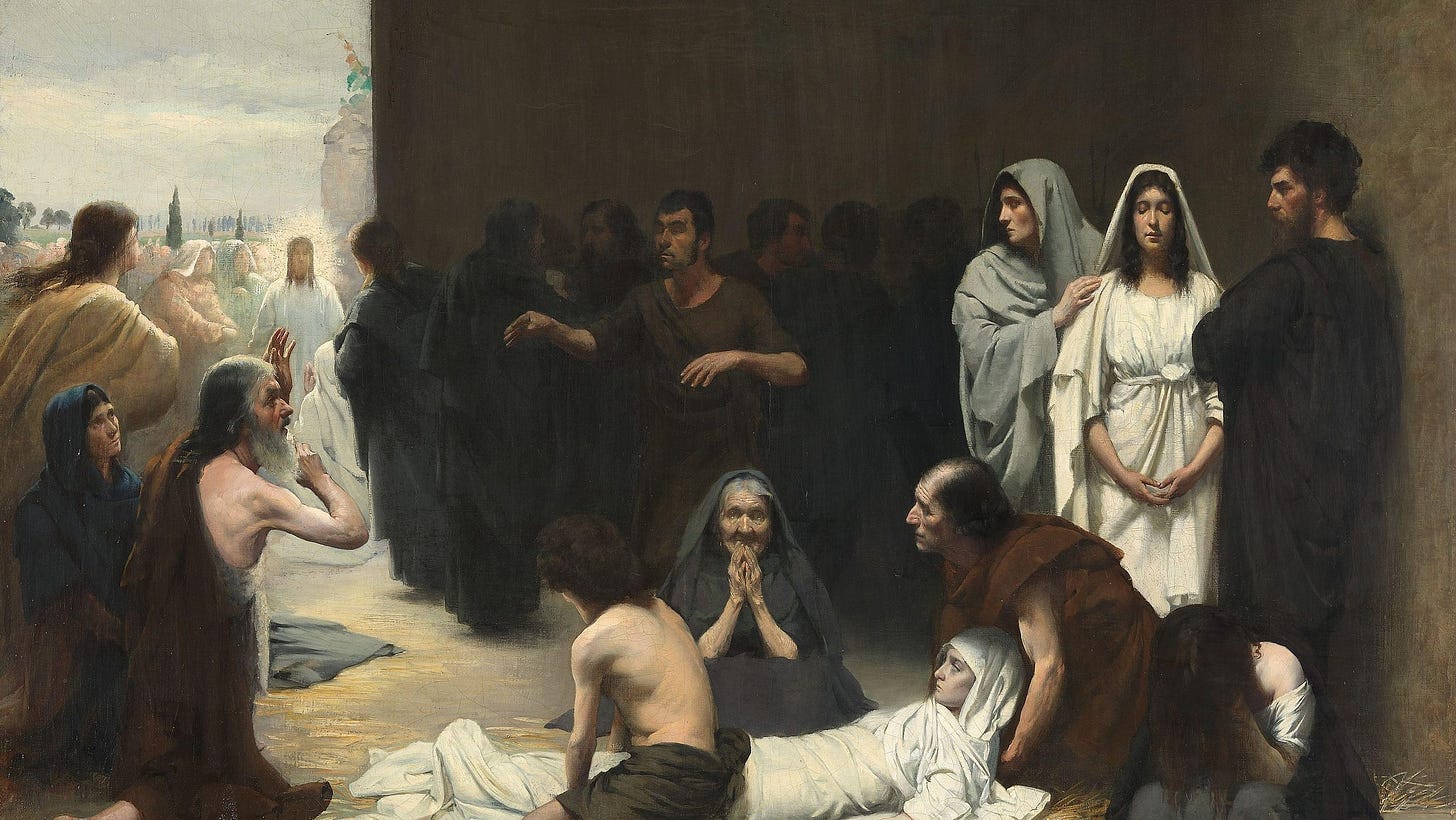The Close Presence of Christ in Advent
Advent is a time to revive our sense that Christ is present with us, watching over us and ready to act decisively.

Advent is a time to revive our sense that Christ is present with us, watching over us and ready to act decisively.
“He will come again in glory to judge the living and the dead, and his kingdom will have no end.”
In the previous part, we considered the role of the “parousia” (Christ’s second coming in glory) in the season of Advent.
But even aside from Advent, does the second coming have the place in the popular Catholic thought and imagination that it deserves?
This is a part of our series The Roman Liturgy – an ongoing series of standalone pieces about the liturgy, hope, and the crisis in the Church.
We profess our faith this second coming every Sunday and feast day in the Creed, and the general idea—that God is the rewarder and judge of our deeds—is considered be so crucial that theologians say it must be explicitly believed for a man to be saved.
Fr Henry James Coleridge—a nineteenth century Jesuit—observed:
“[The second coming of Christ is] so spoken of from one end of Scripture to the other, so that we may almost say, that there is no one thing so constantly foretold and dwelt on as the last end of all things.”1
Coleridge gives examples showing that even when the Prophets speak more explicitly of Christ’s “first Advent” in gentleness and humility, “they seem unable to restrain themselves from adding particulars which belong to His second Advent in power, majesty, and wrath.”2
This is not merely figurative speech, an hyperbolic way of talking about the historical birth of Christ. Christ’s glory is indeed made manifest in his humiliations: Coleridge shows that Christ and his Apostles, never cease to point to second coming in glory, manifested even even when Christ stood bound, humiliated and otherwise silent before Caiaphas.3
This is why Christ’s second coming in glory is at the centre of the Catholic religion. The liturgical writer Fr Johannes Pinsk made the striking claim that “the coming of the Lord” is even “the central idea of every Christian feast,” and that every feast, even the most “historical” in its focus, has some relationship with the advent of Christ.4
The Second Coming in the liturgy
Applied to the liturgy, he writes that when the early Christians celebrated the historical events of Christ’s life, their gaze was turned firmly towards the future, which sustained them in their persecutions. Pinsk writes:
“Christian piety of the first centuries feels like a chosen army, sure of its triumph and of its future victory… The Christians of the first centuries looked forward to the coming of the Lord as a future reality… Ancient piety aspired to the second coming of Christ, to his definitive triumph: ‘May the form of this world disappear and the glory of the Lord appear’ (Maranatha). (Maranatha).”
Pinsk claims the “immense aspiration that runs through the whole liturgy of Advent” is found primarily in “the glory and splendour in which the [second] coming of the Lord is to be realised.” It is this, he claims, that drives the impatience that grows through the Season—manifested in the repeated calls for Christ to come, and the reassurances that he will not delay.
For example, this confidence in the closeness of Christ’s coming appears in the Communion of Gaudete Sunday:
“Say to the fainthearted, take courage and fear not: behold our God will come, and will save us.” (Is 35.4)
It appears with growing insistence in the celebrated “O Antiphons” at the end of the seasons, and the mnemonic “ERO CRAS” (“Tomorrow, I will come”) which the antiphons spell in reverse order:
O E-mmanuel (23 Dec)
O R-ex Gentium (22 Dec)
O O-riens (21 Dec)
O C-lavis David (20 Dec)
O R-adix Jesse (19 Dec)
O A-donai (18 Dec)
O S-apientia (17 Dec)
The tension between the knowledge that Christ has already come and yet is still to come again, and the holy impatience for his actual second coming, reaches a great height on Christmas Eve itself. This is epitomised in the repetitive Invitatory antiphon at Matins (as well as at the other offices and at Mass), speaking specifically of seeing God’s glory:
“This day ye shall know that the Lord cometh, and in the morning, then ye shall see His glory.” (Exodus 16.6-7)
This spirit of Advent is very much the atmosphere of the book of the Apocalypse.
This is a members-only post for those who support us with monthly or annual subscriptions. It’s a part of our series The Roman Liturgy on the liturgy, and reasons for hope amidst the crisis in the Church.
Our work takes a lot of time and energy. Please consider subscribing if you like it.
Here’s why you should take out a membership of The WM Review today:
Help us continue building the case for a restrained, theological approach to the crisis in the Church
Support an eclectic and sometimes eccentric variety of content
Provide FREE membership to clergy/seminarians (subscribe and reply to the email if this applies to you.)
A small monthly membership really helps us keep The WM Review going. Can you chip in today?

